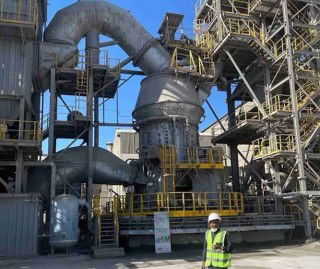“Coup” appears to be the much-used buzzword surrounding the appointment of Jan Jenisch as the new LafargeHolcim CEO on 22 May 2017. He is expected to take over as CEO on 16 October although in all likelihood will start work earlier.
The news was well-received by the stock markets as LafargeHolcim shares jumped 4.4 per cent to CHF56.70 at the start of trading on Monday, 27 May. Analysts Bernstein have described the appointment as one that “ticks all the right boxes”. They highlight his “international leadership with relevant industry experience” as well as having “the right skillset to address the cement producer’s specific issues”.
Jenisch’s track record at Sika, where he was appointed CEO in January 2012, has been excellent. He combined analytical sharpness, a pleasant demeanor and assertiveness to take Sika from a US$1bn sales company to one that commanded US$6bn at the end of his term as he versed himself in the construction industry. He was responsible for Sika’s high-growth strategy, significant improvements in efficiency and profitability as well as major acquisitions that would see the company drive an accelerated expansion into new markets. Between 2012 and 2016 Sika saw its revenues grow at a CAGR of eight per cent (local currency), of which five per cent was organic growth and three per cent M&A related.
But Jenisch’s departure at Sika was not without a cloud. The departure came as a shock to Sika and its employees. While his successor, Paul Schuler, is a safe choice who enjoys the support of the Burkard family (which controls Sika), Jenisch’s departure was far from smooth, according to some sources. Much of it seems tangled up with the sale of Sika to France-based Saint-Gobain, with Jenisch being fiercely opposed to the Burkhard family’s chosen path, according to Swiss business magazine, Bilanz. Faced with the prospect of an increasingly difficult working environment either with the new owners following the divestment or lacking support from the Burkhards, Jenisch recognised an opportunity when LafargeHolcim discussed the possibility of succeeding Eric Olsen, according to Bilanz. When the CHF9m offer came, Jenisch completed his coup.
For LafargeHolcim the appointment has also been a coup, particularly for its chairman, Beat Hess. The previous search for a CEO took a year and Beat Hess had stated upon Eric Olsen’s departure that he did not expect a new chief to be in place before the autumn, in line with his image of preferring a steady and careful rather than a swift approach to issues. Nevertheless, he presented the new chairman after just 28 days and moreover, with unanimous support of his Board, a key ingredient missing under the previous CEO.
However, the tone going forward is one of optimism. Expectations are high and include a strategy to target industry-leading levels of overhead expenses and finding a post-merger management model that works for LafargeHolcim. Most of the hard post-merger work has been carried out and Jenisch is reported to be the man to take the company forward. There will undoubtedly be some reorganisation and cost-cutting, possibly by removing a management layer, according to Bernstein. “We also expect Jenisch will take a more long-term approach to strategy, galvanise the support of employees and management, and restore credibility with investors in the LafargeHolcim story,” says Bernstein. Jenisch’s reported decentralised management style, empowering local managers, also appears a good fit with LafargeHolcim’s ‘multi-local’ approach. His ability to galvanise employees will also be a positive factor in LafargeHolcim’s post-merger cultural integration, which remains incomplete.
As a result, the research house sees the company as investible for the first time since its merger and upgrades its status to ‘Outperform’. In 2018-19 Bernstein’s EBITDA forecasts point to an annual rise of around 10 per cent and a significant rise in target price.

Hima Cement emerges as leading contender to acquire Khayah Cement
Hima Cement , the East African producer owned by Uganda’s Sarrai Group, has emerged as the lead...